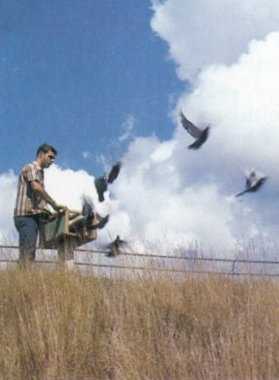
|
Biological Bird Navigators - Page 1 After about three decades of experiments on homing pigeons, scientists currently have two viable hypotheses concerning the "mapping" ability of birds. Although only homing pigeons have been studied, there is good reason to believe that migratory birds also rely on some sort of biological map to find their way back to traditional nesting or wintering sites. The first hypothesis, conceived and tested primarily by a group of Italian scientists, involves an "odor map." The scientists propose that young pigeons learn this map by smelling different odors that reach their home loft on winds from varying directions. They would, for example, learn that a certain odor arrives on winds blowing from the east. If a pigeon is transported eastward from its loft it should smell that odor more strongly either on the way to or at the release site. This should tell the pigeon that it needs to fly westward to return home. Although it may sound preposterous to some, there is a large amount of evidence supporting this hypothesis. However, even its strongest proponents do not extend the idea to include long-distance migrants. Homing Pigeons are released at an unfamiliar location to test their ability to navigate back to home lofts. Return to Bird Migration and NavigationOn to Bird Biological Navigation Page 2 ⇨ |